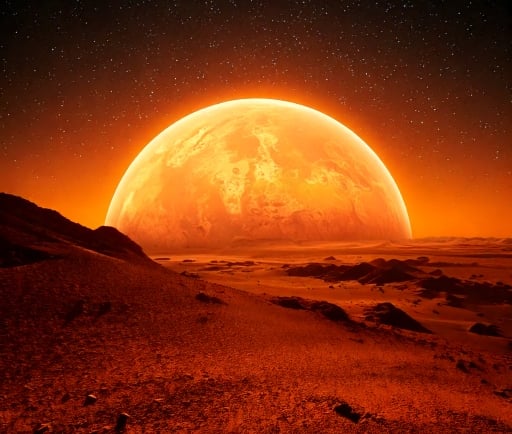The KOI-5878.01: An Orange Superhabitable World


Introduction to KOI-5878.01
In our vast universe, the search for habitable worlds has captivated scientists and astronomers for centuries. Among these celestial discoveries is KOI-5878.01, an intriguing orange superhabitable planet that orbits an f-type main-sequence star known as KOI-4878. Situated a staggering 1075 light-years away from Earth, KOI-5878.01 presents a unique opportunity to examine the potential for life beyond our solar system.
The Characteristics of KOI-5878.01
KOI-5878.01 is characterized by its striking orange hue, suggesting the presence of various atmospheric gases that contribute to its distinct appearance. Scientists believe that this superhabitable world exhibits conditions that might surpass those found on Earth, possibly supporting a diverse range of life forms. The planet's orbit around its host star, KOI-4878, provides a stable climate that is crucial for the development of life, fostering a rich environment for ecosystems to thrive.
The Importance of Studying KOI-5878.01
Studying KOI-5878.01 is not only pivotal in understanding the formation of planets and their atmospheres but also holds significant implications for astrobiology. The exploration of this superhabitable world can yield insights into how life might adapt to different planetary conditions. Furthermore, it challenges our existing notions of habitability, suggesting that there may be other forms of life capable of flourishing in environments vastly different from Earth.
As we continue to advance our technologies and deepen our understanding of the cosmos, KOI-5878.01 stands as a beacon of hope. It illustrates that the universe, with all its mysteries, continues to surprise us. The quest for knowledge about planets like KOI-5878.01 enhances not only our understanding of the universe but also our perspectives on our own planet's ecological systems and future.
